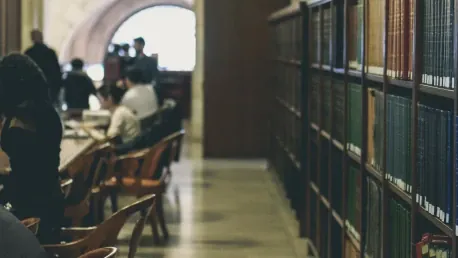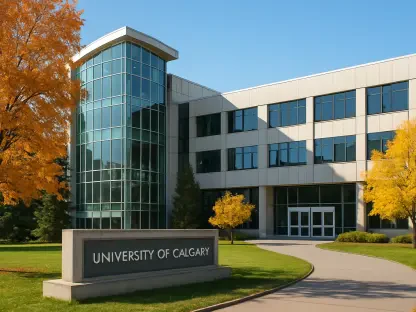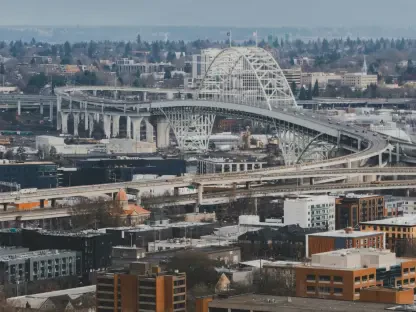Texas A&M University is taking a significant step to manage its future properly by temporarily capping undergraduate enrollment growth at its main campus in College Station. This strategic initiative, led by President Mark Welsh III, seeks to address the impacts of a decade-long period of rapid expansion, during which the student population increased by an astonishing 30%. Over the next five to seven years, the university plans to limit undergraduate admissions to 15,000 new students annually while focusing on improving infrastructure and student services.
Enhancing Campus Infrastructure
Addressing Housing and Dining Challenges
The rapid increase in Texas A&M’s student body has put significant pressure on campus resources, such as housing and dining facilities. At present, the College Station campus hosts 76,633 students, reflecting an 11.6% rise over the past five years. This substantial growth has created pressing issues, necessitating a deliberate focus on expanding and upgrading these key facilities. The university’s plan aims to not only meet current demand but also anticipate future needs by increasing on-campus housing capacity and improving dining services to better accommodate the growing student population.
On top of these expansions, efforts will also target creating additional study spaces, essential for fostering a conducive learning environment. By constructing and renovating study areas, Texas A&M aims to reduce overcrowding and provide students with the quiet, comfortable spaces they need for academic success. These enhancements are expected to significantly ease the strain on current resources, ensuring students can effectively balance academic and social activities as the university focuses on maintaining its high standards of educational excellence.
Improving Transportation and Logistics
Another critical component of Texas A&M’s infrastructure improvement plan involves addressing the transportation and logistical challenges brought on by the influx of students. The university is looking to modernize its transportation network to better serve its large campus. This includes introducing eight to twelve new buses, vital for reducing wait times and improving overall transit efficiency. Furthermore, the creation of separate lanes for bicycles and electric mobility devices is under consideration to enhance safe and accessible transportation options for all university members.
The university is also reviewing class times on the rapidly growing West campus as a potential solution to alleviate traffic congestion and improve overall campus mobility. Parking has emerged as a significant issue, with capacity projected to exceed demand as early as next year. Hence, the plan proposes the addition of new parking spaces, ensuring faculty, staff, and students have adequate parking access. Addressing these logistical bottlenecks is essential for fostering a seamless campus experience, allowing students to focus more on their studies and less on the complexities of getting around the campus.
Academic Support and Faculty Expansion
Increasing Faculty-to-Student Ratio
In line with its commitment to maintaining high educational standards, Texas A&M University recognizes the necessity of hiring more faculty to keep up with the growing student population. The institution plans to hire between 140 to 160 new tenured and tenure-track faculty members. This hiring spree, endorsed by the accompanying capacity study, aims to enhance the faculty-to-student ratio, ensuring students receive the individual attention and guidance needed for their academic pursuits.
An annual budget of $5 million will be allocated for the salaries and benefits of the new faculty, complementing the $3 million already committed by the university for this purpose over the next five years. By bolstering the faculty, Texas A&M aspires to nurture a more supportive and enriching educational environment where students can thrive. This measure is pivotal in preventing the dilution of educational quality that often accompanies rapid enrollment growth, thus solidifying Texas A&M’s reputation as a leading institution in academic excellence.
Expanding Academic and Recreational Facilities
In conjunction with faculty expansion, Texas A&M aims to significantly increase academic and recreational facilities to match the growing demand. This includes adding study and recreation spaces, crucial for providing students with balanced opportunities for both academic and extracurricular engagement. Additional classroom space is also on the agenda, aimed at preventing overcrowded learning environments and ensuring students have ample room for in-depth learning experiences.
Moreover, enhancements to recreation facilities will play a vital role in promoting student well-being and facilitating a holistic university experience. New amenities, such as expanded gym and sporting facilities, will allow for an improved balance between academics and physical activity. These developments underscore Texas A&M’s commitment to creating a well-rounded campus environment, one that supports the intellectual, social, and physical development of its students.
Planning for Long-Term Success
Impact of the Enrollment Cap
President Mark Welsh III emphasized that the primary objective of capping undergraduate enrollment is to “right-size” the campus, thereby enhancing the quality of education and ensuring that student experiences remain positive. This enrollment cap is not a move to reduce existing resources but rather to strategically pause and recalibrate growth in a way that benefits all stakeholders. By channeling efforts into infrastructure and faculty expansion, the university plans to sustain its educational standards and student satisfaction levels, even as it prepares for future growth.
The enrollment cap serves as a temporary measure to reassess and bolster the university’s infrastructure to meet the changing demands of an evolving student population. It’s a forward-thinking approach aimed at ensuring the university’s facilities and services are capable of supporting both current and future students adequately, thus maintaining Texas A&M’s longstanding reputation for excellence in higher education.
Looking Ahead
Texas A&M University is making a significant move to ensure proper management of its future by capping the growth of its undergraduate population at its main campus in College Station. This temporary measure is part of a strategic initiative helmed by President Mark Welsh III. Over the past decade, the university has seen a remarkable 30% increase in its student population, which has presented numerous challenges. To address these issues, Texas A&M will limit undergraduate admissions to 15,000 new students each year for the next five to seven years. This approach will allow the university to concentrate on improving its infrastructure and enhancing student services, ensuring that the quality of education and campus life remains high. By focusing on these areas, Texas A&M aims to create a more supportive environment for students, faculty, and staff alike. This move is designed to balance the university’s growth with the availability of resources, thereby ensuring a sustainable future for one of the nation’s largest public universities.









